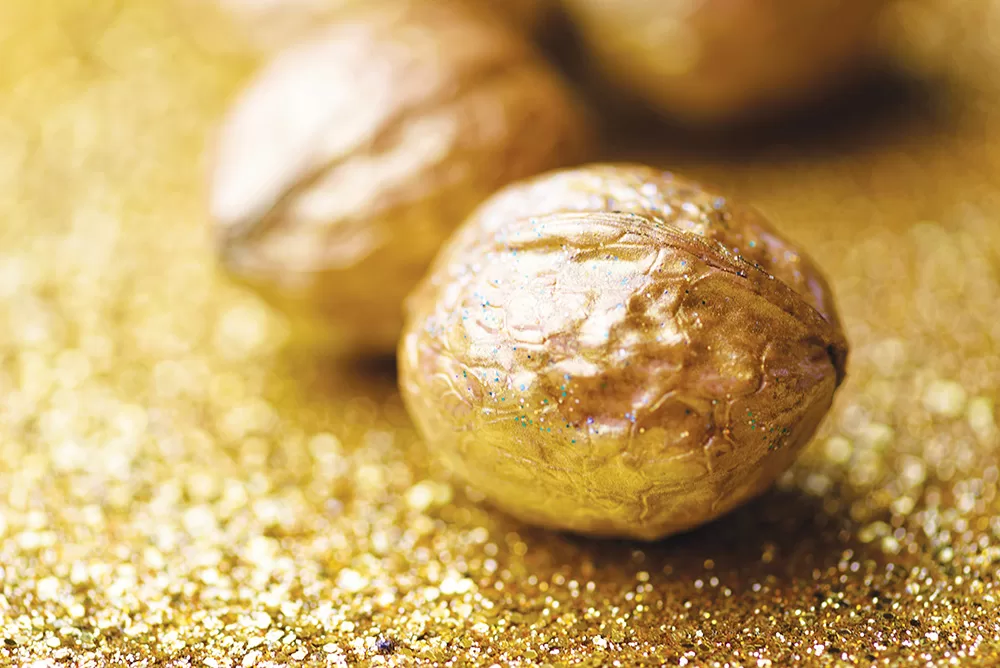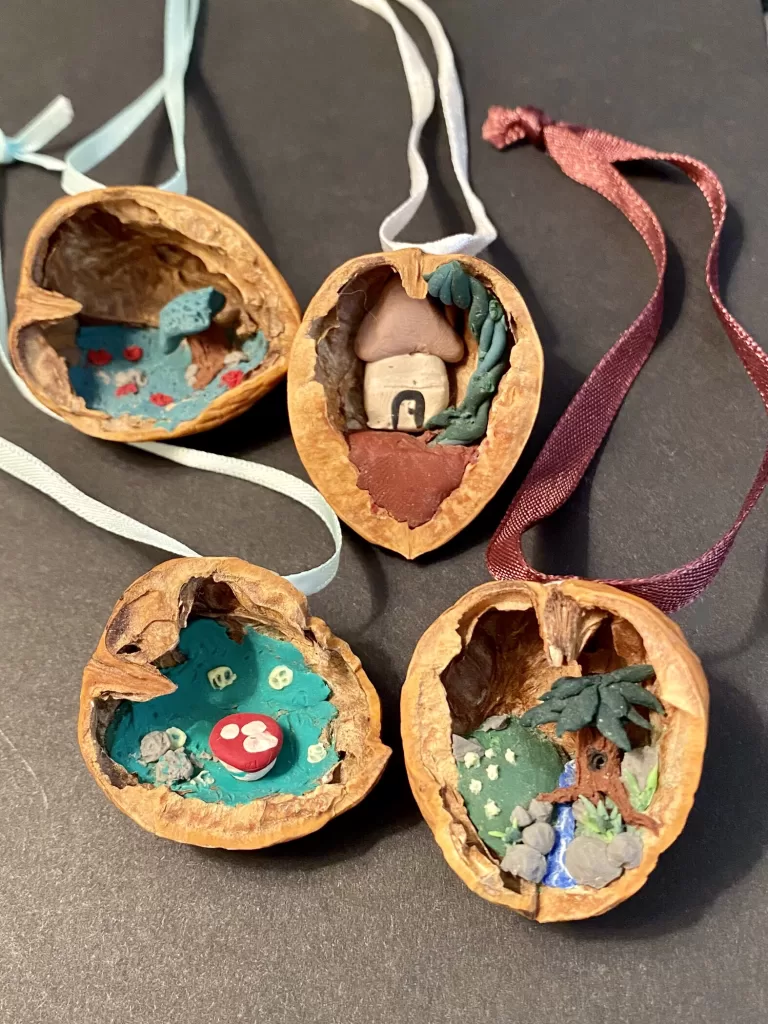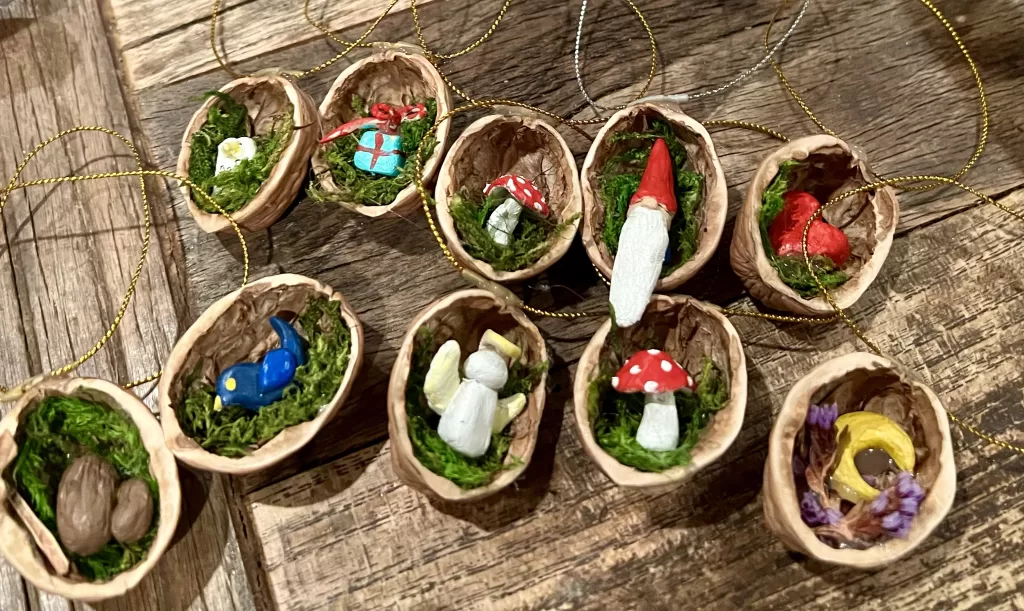
Unlike the stunning trees decorated with colorful baubles at the mall, Christmas trees with handmade decorations have charm and warmth and tradition. Over the years, Christmas tree ornaments can transform into keepsakes that mark the time of when they were made or received and hold memories of holidays passed. Trimming the tree can be a trip down memory lane.

Photo by Claire Chapman
There are many different ways to make ornaments, but bringing items in from outside can be reminders of the gifts of nature during the colder months of the year. Sustenance that can be saved for winter was especially prized; so much so that nuts were often hung on Christmas trees and broken open on the 12th day of Christmas. Walnuts, in particular, are rooted in both pagan and Christian traditions as symbols of good luck. Historically, they have been thought to represent strength, wisdom, and fertility. We now know that there is some truth to that lore because nuts are antioxidant-rich, have a high-content of brain-boosting omega-3 oils, and an abundance of minerals. Whether for luck, beauty, or nourishment, they have been used as ingredients in many festive dishes and as holiday decoration for hundreds of years.

While a walnut can be enjoyed by simply being cracked open with a nutcracker, there is another technique that can be used to split a walnut along its “seam” so that the shells can be saved and used to make ornaments. By carefully using a hammer and a chisel or a knife placed in the groove on the side of a walnut, the shell can be split into two halves. The nut meat can be removed and eaten or saved for a recipe, leaving the divided shell ready for crafting.












